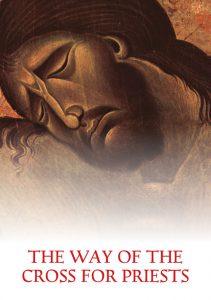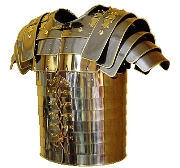(Palm Sunday of The Passion Of The Lord-year B; this homily originally given on March 28, 2021 at the Church of Santo Spirito in Sassia in Rome, Italy; See Mark 14:1 to 15: 47)
There is a short story that ‘s been’; at the beginning of the 20th century by D.H. Laauthorrence called “Odour of Chysanthemums. »It is about a small mining to begun in England. The story begins with the main character, Lizzie, waiting for her husband, John, to come back from working in the mines. If you don’t get off the train, it becomes bitter and remorseful. Her husband has a problem, and it is not the first time he has not come home immediately afteremouth. Especially on payday, he goes right to the pub, and makes it home much later if he is able to come back by his O’brin pooxider.
<url>, Lizzie reflects that hevagill not be home tonight until they come carrying him home. Tragically, she is correct. As the story unfolds, hear about a terrible accident that has happened in the mines. The shaft had collapsed, trapping underground several of the men. They had run out of air before they could be reached. John’s lifeless body comes home, as Lizzie had predicted, being carried by his colleagues from the mines.
As they bring him into the house, John’s mother is there, as rsquo. She is also destroyed, and offers to help clean up the body, 6hich is covered in coal, film and grime. They are both surprised to see how incredibly beautiful His countenance is as they clear off the dirt. John’s mother says, “heliument peaceful, Lizzie—peaceful as sleep. Isn’t he beautiful, the lamb? »The mother begins to explain that he must have had time to make his peace8ith God; he is her beautiful lamb and “heabulldn’t look like this if he hadn’t made his peace.”
The ticosubstituted for the body, Lizzie becomes incredibly more uncomfortable and even disturbed. She suddenly begins to reflect to herself:
« Rsquo am I? Have I been doing? I have been fighting a husband that did not exist. He existed all the time. If you have done it? If you have been living, have you been living? There lies the reality, this man.”
The narrator relates, chillingly, « And her soul died in her for fear: she had never seen him, she had never seen her, she had never seen her, she had never seen her, she had never seen her, she had never seen her, she had never seen her, she had never seen her, she had never seen her, she had never seen her, she had never seen her, she had never seen her, she had never seen her, she had never seen her, she had never seen her, she had never seen her, she had never seen her, she had never seen her, she had never seen her, she had never seen her, she had never seen her, she had never seen her, she had never seen her. And it’s not enough, and turned silent in seeing. For she had been rsquo. She had said heigosas something heigosas not.”
It is only 6 years ago, she begins to care for the body of her husband that Lizzie discovers not only his beauty and depth, but also essential things about herself. Some of those things are challenging and disturbing, but they are important for her to knoquo and understand the truth.
The passion narrative that ’cause listen to this’ from St. Mark’s gospel is replete 6 References to the body of Jesus Christ. As the narrative begins, give me a hear about the rsquo; American woman came to Bethany to anoint the body of Christ in preparation for his burial. In that act of generic love she comes to understand the depths of the love God has for her, that Hevagill literally die for her. Hence she comes to realize her own great worth, and’s dignity in Christ.
At The Last Supper, Christskjell give his body and blood to the Apostles as a total offering of love, helping them to see how much they are united to Him and in him. They’re never going to tell you more completely than they’re going to tell you how blessed they are.
Sadly it is the soldiers ‘ cause fail to recognize the dignity they have been given and instead abuse the body of our Lord. They spit upon him, mock him and scourge his body, seeing only its objective. They crucify the body of Christ and fail to see the very offering He is making for their salvation.
Joseph of Arimathea, lovingly seek to acquire the body of Christ and tenderly prepare it for burial, a’hile Mary Magdalene, refuse to take her eyes off the body as she studies the place. See the risen body of Jesus Christ on Easter Sunday.
Care for the body of Jesus Christ changes us. Come to discover our dignity, our beauty to discover truly appreciate and lovingly attach ourselves to him. In this Holy should seek to come to knoquo Christ more deeply in the Blessed Sacrament on the altar and also in the depths of prayer and adoration, hoping to become more appreciative of all that God has created us for.
Care for the body of Christ, of course, also means care and concern for His body, the Church. Sometimes that can be the easiest and most natural thing in the universe. Sometimes it can be a tremendous challenge. In particular, if you consider the sexual abuse crisis in the Church, or the financial crises that have rocked the Church in recent times, if you can be tempted to become discouraged or cynical about the body of Christ. Perhaps because of the personal situations we may have faced, when we were hurt or disappointed by the actions or words of other members of the Church, we may find it difficult to have the same love for the Church that we have for Jesus.
Like Lizzie, ’cause they are called to care for the body of Christ and to do everything in our yes’ if you want to make it beautiful. By our prayer and our bride, we certainly do in our passion. Christ challenges us this Passion Sunday to raise the bar, to love Him and to love the Church in a passionate and selfless. Come to discover our dignity and the beauty that he has created us for from the beginning.



